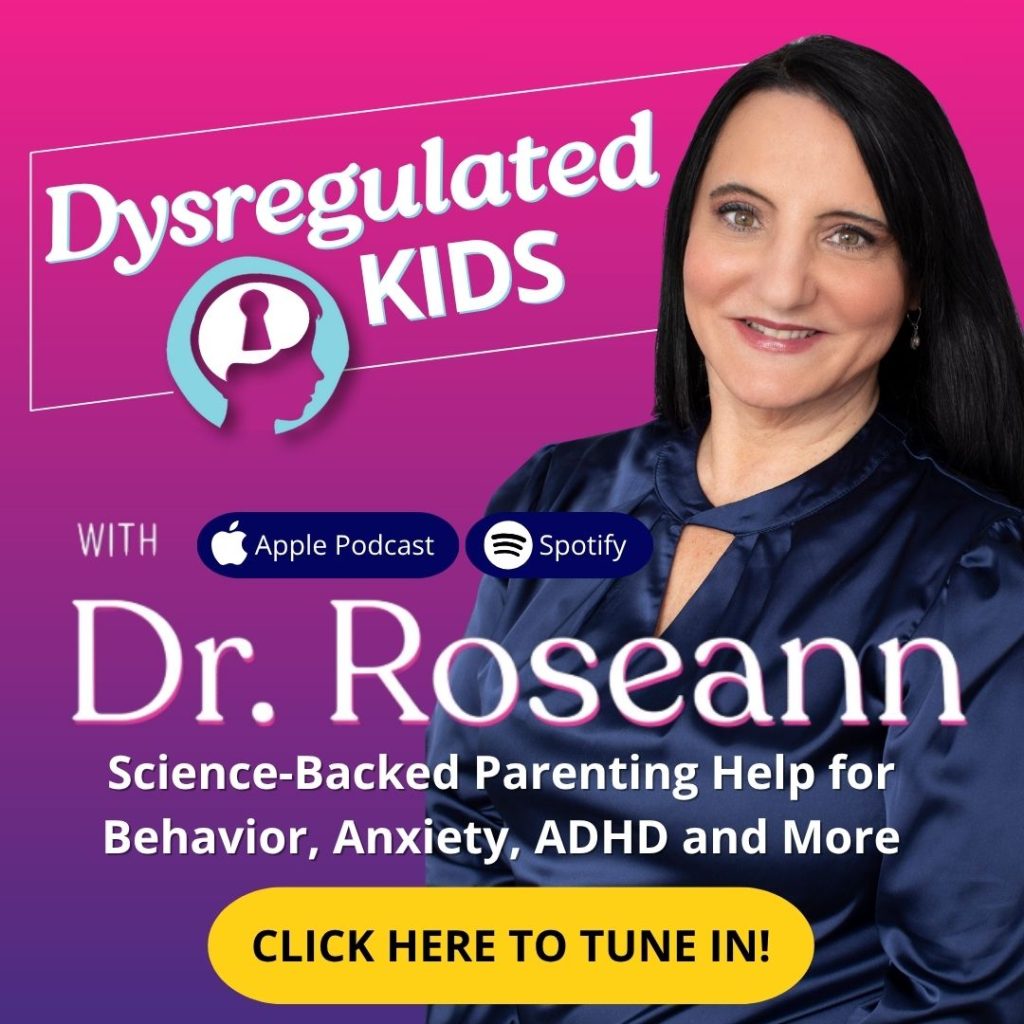Estimated reading time: 8 minutes
In one clear guide, you’ll learn the definition of a meltdown, how it differs from a tantrum, and exactly what to do before, during, and after.
If your child’s behavior feels out of control, you’re not alone. I see amazing parents every day who are doing everything “right” and still getting blindsided by big outbursts.
Here’s the reframe: a meltdown isn’t defiance. It’s a nervous system overload. Behavior is communication. Calm the brain first. Everything else follows.
In this article, I’ll show you what a meltdown is and how it’s different from a tantrum. You’ll learn early warning signs and simple de-escalation steps you can use today.
I’ll share prevention routines, parent scripts, and my CALMS Protocol. Real life stuff—school mornings, grocery lines, homework time.
I’ve got you. It’s gonna be OK.
What Is the Definition of a Meltdown in Kids?
A meltdown is a total loss of behavioral control when a child’s nervous system is overloaded by sensory, emotional, or information input. It isn’t manipulative. It isn’t willful. It’s biology driving behavior.
In a meltdown, a child may scream, cry, hit, run, or shut down. Safety awareness drops.
- Think brain, not behavior. Behavior is communication from a dysregulated nervous system.
- Why this matters: Some preschool tantrum patterns predict later mental health challenges, so understanding and support now can change a child’s path (Hoyniak et al., 2023).
Real-life snapshot:
At the grocery store, your child covers their ears, drops to the floor, and can’t respond to your words. That’s likely a sensory meltdown, not a “naughty moment.”

Meltdown vs. Tantrum
A tantrum is goal-driven (“I want the blue cup”). A meltdown is overload-driven (too much sound, light, frustration).
In tantrums, some control and social awareness remain; in meltdowns, control drops out until the nervous system settles.
- Tantrum: often stops when the need is met or limit holds.
- Meltdown: ends only after regulation (time, safety, sensory relief).
- Parent tip: Hold the limit and help the brain calm. Regulate → Connect → Correct.™
Parent example (Maya, mom of a 10-year-old with anxiety):
Maya noticed that requests to “just stop” made things worse. When she lowered the lights, gave noise-reducing headphones, and sat nearby breathing slowly, her son settled faster.
Takeaway: Co-regulation calms the brain so skills can come online.
What Triggers Meltdowns—And How to Spot Them Early
Understanding the definition of a meltdown helps you catch the early signs. Most meltdowns start with overload:
- Sensory: noise, lights, textures, crowds.
- Information: rapid instructions, transitions, multi-step tasks.
- Emotion: disappointment, frustration, social conflict.
In autism, sensory processing differences are tied to anxiety and challenging behaviors. Reducing sensory load reduces risk (Wigham et al., 2015).
Early signs to watch (the “uh-oh” cues): clenched fists, face scrunching, hands over ears, pacing, refusal, rapid speech, zoning out.
Triggers → Early Signs → What to Do (R-C-C)
| Trigger | Early Signs | Regulate–Connect–Correct Move |
|---|---|---|
| Noise/crowds (sensory) | Hands on ears, stiff body | Regulate: Quiet space or headphones; Connect: “I’ve got you.”; Correct: Return when calm. |
| Transition/instructions | “No!”, tears, bolting | Regulate: Slow breath + visual; Connect: “One step at a time.”; Correct: Break task into 1–2 steps. |
| Frustration with tasks | Throwing, ripping paper | Regulate: Movement break; Connect: “This is hard, I see it.”; Correct: Offer 2 choice. |
| Social conflict | Yelling, hiding | Regulate: Water + wall lean; Connect: “You’re safe.”; Correct: Practice repair script later. |
| Hunger/fatigue | Whining, irritability | Regulate: Snack/quiet rest; Connect: “Let’s reset.”; Correct: Routine tweak next time. |
What Do ADHD and Autism Meltdowns Look Like in Real Life?
ADHD Meltdown
Often tied to executive-function overload—too many demands, too fast. You may see ripping homework, shouting, or shutting down. Prevention focuses on structure, movement, and single-step prompts.
Autism (ASD) Meltdown
Frequently linked to sensory overload or unexpected change. You may see covering ears, bolting, or self-injury. Prevention focuses on sensory supports, predictability, and visual schedules.
Parent Examples:
- Marco, dad of an 8-year-old with ADHD: Homework time was chaos. Marco added a timer, one task per card, and 5-minute movement breaks. Meltdowns dropped. Takeaway: Less input + more structure = less overload.
Lin, mom of a 6-year-old with ASD: Birthday parties were a disaster. Lin now arrives early, scopes a quiet corner, and brings chewy snacks and headphones. Fewer blowups. Takeaway: Anticipate sensory needs before the storm.
How to De-Escalate a Meltdown Safely in the Moment
Your job: Protect safety and reduce input. Speak less. Move slowly. Lower lights if you can.
De-escalation moves (use what fits):
- Co-regulation strategies: slow breathing, soft gaze, grounded posture. Kids mirror calm.
- Reduce sensory input: quiet room, noise-reducing headphones, dim light.
- Simple scripts (parent scripts for meltdowns):
- “I’m here. You’re safe.”
- “One step: breathe with me.”
- “We can pause. Then we’ll try again.”
Safety first: Clear objects. If bolting is a risk, position yourself between the child and the exit. Avoid restraint unless there is immediate danger and you’re trained.

How to Prevent Meltdowns With Routines, Co-Regulation, and the Calms Protocol
Prevention is about predictability, sensory support, and skill-building.
Here’s my CALMS Dysregulated Kid Parenting Protocol:
CALMS (Your Prevention + Coaching Roadmap)
- C — Co-Regulate: You calm first. Slow breath. Steady tone.
- A — Avoid Personalizing: This isn’t about you. It’s the nervous system.
- L — Look for Root Causes: Hunger, transitions, sensory load, anxiety.
- M — Model Coping: Show the self-regulation skills for kids—breathing, wall push, counting.
- S — Support & Reinforce: Catch small wins. Praise effort. Add sensory tools.
Why this works:
Children learn regulation in families through modeling, coaching, and the emotional climate at home (Morris et al., 2007).
De-escalation techniques for children that double as prevention:
- Morning and after-school routines with visual steps.
- Movement snacks every 30–60 minutes.
- Choice language (“blue or green?”) to reduce power struggles.
- Sensory toolkit: headphones, chewy snack, fidgets, sunglasses.
- RESET to Regulate: breathe, move, sip water, quick stretch, name the feeling.
Short quotes you can pin on the fridge:
- “Co-regulation is the bridge to self-regulation.” — Dr. Stuart Shanker
- “See the need behind the behavior.” — Dr. Mona Delahooke
- “Name it to tame it.” — Dr. Dan Siegel
When to Get Extra Support—And What Actually Works
Consider extra help if meltdowns are frequent, severe, or unsafe. Or if school and home are both struggling.
What helps (science-backed + practical):
- Parent coaching in co-regulation and routines.
- Occupational therapy for sensory needs; sensory interventions can improve participation when targeted well (see evidence reviews).
- Brain-based tools (QEEG, neurofeedback, CALM PEMF®) and lifestyle pillars (sleep, nutrition, movement, detox). These support nervous system regulation.
- School collaboration: sensory breaks, flexible seating, and visual schedules.
Important:
Some preschool tantrum patterns are linked to later psychopathology. Early support matters (Hoyniak et al., 2023).
Last Word: Bring the Calm Home
You did the hard part—you showed up and learned. That matters. Now keep it simple. Regulate first. Then connect. Then correct.
Protect safety. Lower the input. Use one script. Praise one small win. Repeat tomorrow.
You’re not alone. I’m with you. It’s gonna be OK. When you know the definition of a meltdown, you know where to start—and how to help today.
Next Step:
Watch the short video about the BrainBehaviorReset® to start building self-regulation at home
FAQs
How long do meltdowns last?
It varies. Many end within 10–30 minutes once input drops and co-regulation begins. Plan for recovery time afterward.
Is my child doing this “on purpose”?
No. A meltdown is not a choice. It’s a nervous system event. It’s not bad parenting—it’s a dysregulated brain.
What’s one thing to do first?
Lower input. Fewer words. Softer voice. One step at a time. Let’s calm the brain first.
Do meltdowns mean a diagnosis?
Not always. But if meltdowns are intense or frequent, talk with a qualified professional who understands dysregulation and sensory needs.
Terminology
- Meltdown: Loss of behavioral control from overload; safety awareness drops.
- Tantrum: Protest with some control; usually goal-driven.
- Dysregulation: Nervous system out of balance (fight/flight/freeze or shut-down).
- Co-regulation: A calm adult lends their calm so a child can settle.
- Self-regulation: A child’s own ability to manage feelings and behavior.
- Sensory meltdown: Overload from sounds, lights, touch, movement, or other sensory input.
Citations
Hoyniak, C. P., Donohue, M. R., Quiñones-Camacho, L. E., Vogel, A. C., Perino, M. T., Hennefield, L., Tillman, R., Barch, D. M., & Luby, J. L. (2023). Developmental pathways from preschool temper tantrums to later psychopathology. Development and Psychopathology, 35(4), 1643–1655. https://doi.org/10.1017/S0954579422000359
Wigham, S., Rodgers, J., South, M., McConachie, H., & Freeston, M. (2015). The interplay between sensory processing abnormalities, intolerance of uncertainty, anxiety, and restrictive and repetitive behaviours in autism spectrum disorder. Journal of Autism and Developmental Disorders, 45(4), 943–952. https://doi.org/10.1007/s10803-014-2248-x
Morris, A. S., Silk, J. S., Steinberg, L., Myers, S. S., & Robinson, L. R. (2007). The role of the family context in the development of emotion regulation. Social Development, 16(2), 361–388. https://doi.org/10.1111/j.1467-9507.2007.00389.x
Always remember… “Calm Brain, Happy Family™”
Disclaimer: This article is not intended to give health advice, and it is recommended to consult with a physician before beginning any new wellness regimen. The effectiveness of diagnosis and treatment varies from patient to patient and condition to condition. Dr. Roseann Capanna-Hodge, LLC, does not guarantee specific results.
Are you looking for SOLUTIONS for your struggling child or teen
Dr. Roseann and her team are all about science-backed solutions, so you are in the right place!
© Roseann Capanna-Hodge










